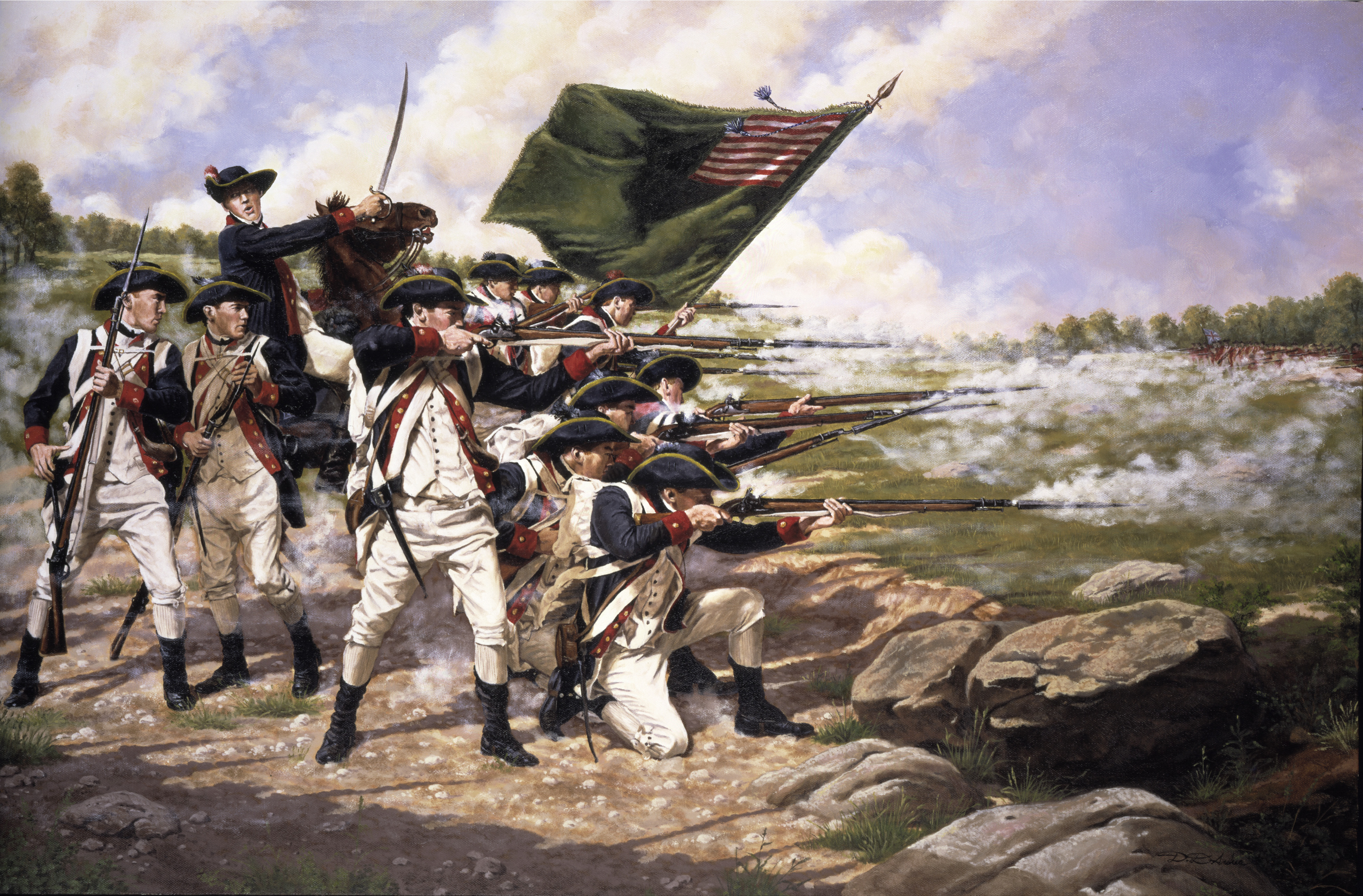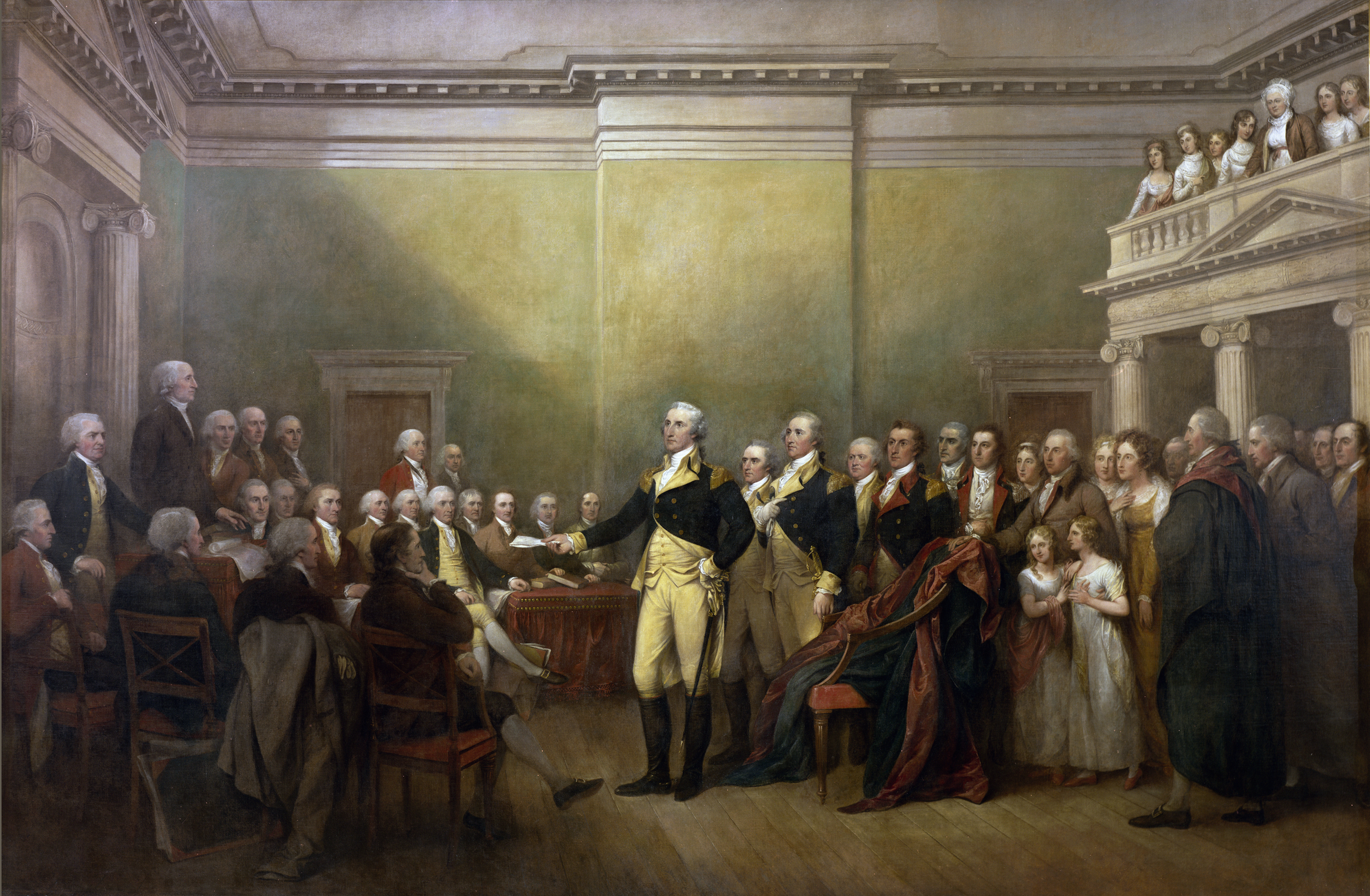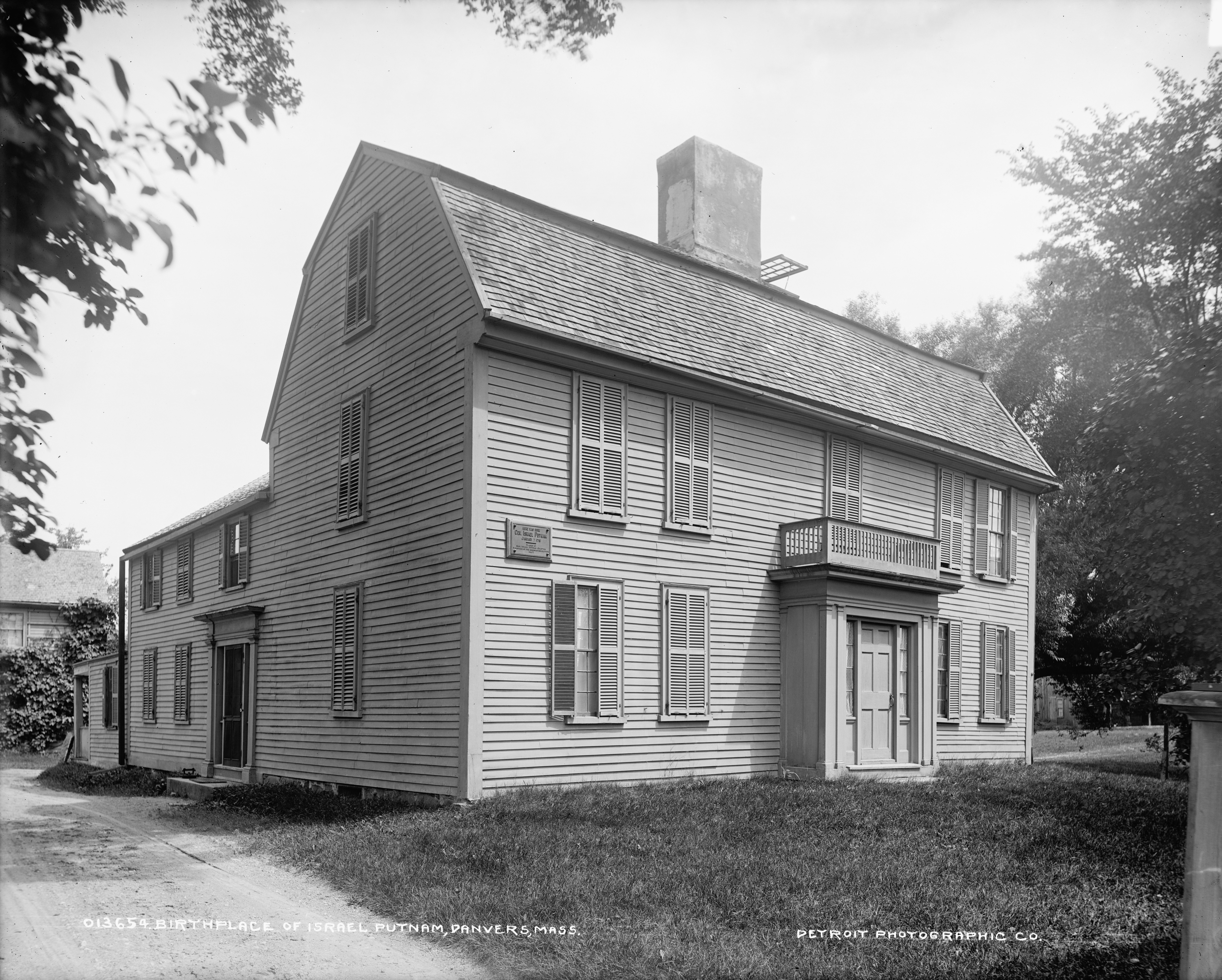|
Red Lion Inn (Brooklyn)
The Red Lion Inn was a tavern in Colonial New York located on Long Island in what is today the New York City borough of Brooklyn. History The inn named in honor of Henry V of England for the tavern he rested in after the Battle of Agincourt, was at the junction of three country roads: the '' Narrows Road'' which led north from Denyse's Ferry; ''Martense Lane'' which passed through the Heights of Guan to Flatbush, and the ''Gowanus Road'' which led to Brooklyn Heights: this colonial era juncture is the modern day location of Fourth Avenue and 35th Street. In the early morning hours of August 27, 1776, the first shots of the Battle of Brooklyn were fired here when British troops under Major General James Grant encountered American pickets stationed at the Red Lion. According to some accounts the British troops were foraging in a watermelon patch. After an initial exchange of musket fire, the Americans retreated in a panic up the Gowanus Road toward the Vechte house. Major ... [...More Info...] [...Related Items...] OR: [Wikipedia] [Google] [Baidu] |
Battle Of Brooklyn
The Battle of Long Island, also known as the Battle of Brooklyn and the Battle of Brooklyn Heights, was an action of the American Revolutionary War fought on August 27, 1776, at the western edge of Long Island in present-day Brooklyn, New York (state), New York. The British defeated the Americans and gained access to the strategically important Port of New York and New Jersey, Port of New York, which they held for the rest of the war. It was the first major battle to take place after the United States United States Declaration of Independence, declared its independence on July 4, and in troop deployment and combat, it was the largest battle of the war. After defeating the British in the siege of Boston on March 17, commander-in-chief George Washington relocated the Continental Army to defend the port city of New York City, New York, located at the southern end of Manhattan Island. Washington understood that the New York Harbor, city's harbor would provide an excellent base for ... [...More Info...] [...Related Items...] OR: [Wikipedia] [Google] [Baidu] |
Samuel Holden Parsons
Samuel Holden Parsons (May 14, 1737 – November 17, 1789) was an American lawyer, jurist, generalHeitman, ''Officers of the Continental Army'', 428. in the Continental Army during the American Revolutionary War, and a pioneer to the Ohio Country.Hildreth, ''Early Pioneer Settlers of Ohio'', 186-216.Leiter, ''Generals of the Continental Army'', 70.Hinman, ''Connecticut during the War of the Revolution'', 141-42. Parsons was described as "Soldier, scholar, judge, one of the strongest arms on which Washington leaned, who first suggested the Continental Congress, from the story of whose life could almost be written the history of the Northern War"Hall, ''Life and Letters of Samuel Holden Parsons'', vi. by Senator George F. Hoar of Massachusetts Parsons was born in Lyme, Connecticut, the son of Jonathan Parsons and Phoebe (Griswold) Parsons. At the age of nine, his family moved to Newburyport, Massachusetts, where his father, an ardent supporter of the First Great Awakening, took c ... [...More Info...] [...Related Items...] OR: [Wikipedia] [Google] [Baidu] |
William Alexander, Lord Stirling
William Alexander, also known as Lord Stirling (December 27, 1725 – January 15, 1783), was a Scottish-American major general during the American Revolutionary War. He was considered male heir to the Scottish title of Earl of Stirling through Scottish lineage (being the senior male descendant of the paternal grandfather of the 1st Earl of Stirling, who had died in 1640), and he sought the title sometime after 1756. His claim was initially granted by a Scottish court in 1759; however, the House of Lords ultimately overruled Scottish law and denied the title in 1762. He continued to hold himself out as "Lord Stirling" regardless. Lord Stirling commanded a brigade at the Battle of Long Island, his rearguard action resulting in his capture but enabling General George Washington's troops to escape. Stirling later was returned by prisoner exchange and received a promotion; continuing to serve with distinction throughout the war. He also was trusted by Washington and, in 1778, expo ... [...More Info...] [...Related Items...] OR: [Wikipedia] [Google] [Baidu] |
Mordecai Gist
Mordecai Gist (1743–1792) was a member of a prominent Maryland family who became a brigadier general in command of the Maryland Line in the Continental Army during the American Revolutionary War. Life Gist was born in Baltimore, Maryland (one source says Reisterstown, Maryland), the fourth child of Thomas and Susannah Cockey Gist. Thomas Gist's father, Captain Richard Gist (1684 – August 28, 1741), was the surveyor of Maryland's Eastern Shore and one of the commissioners who laid out Baltimore Town in 1729. Richard Gist's father, Christopher Richard Gist (1655 or 1659 – Feb. 1690), was an English emigrant who came to the Province of Maryland before 1682 and settled in "South Canton" on the south bank of the Patapsco River. Christopher Richard Gist married Edith Cromwell (1660–1694), who is believed to have been a relative of Oliver Cromwell. Gist was the nephew of Christopher Gist (1706–1759), a son of Richard Gist. Christopher Gist was a Colonial-era explorer, scou ... [...More Info...] [...Related Items...] OR: [Wikipedia] [Google] [Baidu] |
1st Maryland Regiment
The 1st Maryland Regiment (Smallwood's Regiment) originated with the authorization of a Maryland Battalion of the Maryland State Troops on 14 January 1776. It was organized in the spring at Baltimore, Maryland (three companies) and Annapolis, Maryland (six companies) under the command of Colonel William Smallwood consisting of eight companies and one light infantry company from the northern and western counties of the colony of Maryland. History On 6 July 1776, the Maryland Battalion was assigned to the main Continental Army. On 12 August 1776, it was assigned to Stirling's Brigade and five days later (17 August 1776) adopted into the main Continental Army. On 31 August, the Maryland Battalion was reassigned from Stirling's Brigade to McDougall's Brigade. On 19 September 1776 the Maryland Independent Companies were assigned to the Maryland Battalion. This element was relieved from McDougall's Brigade on 10 November 1776. From 10 December 1776 to January 1777, the element was ... [...More Info...] [...Related Items...] OR: [Wikipedia] [Google] [Baidu] |
William Smallwood
William Smallwood (1732February 14, 1792) was an American planter, soldier and politician from Charles County, Maryland. He served in the American Revolutionary War, rising to the rank of major general. He was serving as the fourth Governor of Maryland when the state adopted the United States Constitution. Early life Smallwood was born in 1732 to planter Bayne Smallwood (1711–1768) and Priscilla Heaberd Smallwood (born c. 1715).Historical Society of Charles County Genealogical Files, Southern Maryland Studies Center, College of Southern Maryland, La Plata, MDWarfield, J.D., ''The Founders of Anne Arundel and Howard County Maryland'', Kohn And Pollock, p. 237 ff. (1905). He had six siblings: Lucy Heabard Smallwood (born c. 1734), Elizabeth F. Smallwood (born c. 1736), Margaret F. Stoddert (born c. 1738, married Walter Stoddert c. 1760), Heabard Smallwood (born c. 1740), Priscilla Courts (born c. 1742, married John Courts c. 1760), and Eleanor Smallwood. His sister Eleanor a ... [...More Info...] [...Related Items...] OR: [Wikipedia] [Google] [Baidu] |
Leopold Philip De Heister
Leopold Philip de Heister (4 April 1716 Homberg in Niederhessen - 19 November 1777 Landgraviate of Hesse-Kassel, Hesse-Cassel)''Note that:'' ''has "b. in 1707" for date of birth.'' was a Hessian (soldiers), Hessian general who fought for the British during the American Revolution. Heister was a crippled veteran of many campaigns when he was selected to command the Hessian troops that were hired by the British government for service against the Thirteen Colonies, American colonies. Wilhelm von Knyphausen served under him as second-in-command. He landed on Long Island near New Utrecht, Brooklyn, New Utrecht with two full Hessian brigades on 25 August 1776, three days after the arrival of Gen. William Howe, 5th Viscount Howe, William Howe with the United Kingdom, British troops. The tedious passage of thirteen weeks from Spithead had tried him sorely: “his patience and tobacco had become exhausted. He called for hock, and swallowed large potations to the health of his friends.” ... [...More Info...] [...Related Items...] OR: [Wikipedia] [Google] [Baidu] |
Cornwallis
Charles Cornwallis, 1st Marquess Cornwallis, (31 December 1738 – 5 October 1805), styled Viscount Brome between 1753 and 1762 and known as the Earl Cornwallis between 1762 and 1792, was a British Army general and official. In the United States and the United Kingdom, he is best remembered as one of the leading British generals in the American War of Independence. His surrender in 1781 to a combined American and French force at the siege of Yorktown ended significant hostilities in North America. He later served as a civil and military governor in Ireland, where he helped bring about the Act of Union; and in India, where he helped enact the Cornwallis Code and the Permanent Settlement. Born into an aristocratic family and educated at Eton and Cambridge, Cornwallis joined the army in 1757, seeing action in the Seven Years' War. Upon his father's death in 1762 he became Earl Cornwallis and entered the House of Lords. From 1766 until 1805 he was Colonel of the 33rd Regimen ... [...More Info...] [...Related Items...] OR: [Wikipedia] [Google] [Baidu] |
John Sullivan (general)
John Sullivan (February 17, 1740 – January 23, 1795) was an American general in the Revolutionary War winning several key battles most notably the Delaware crossing. He was a delegate in the Continental Congress where he signed the Continental Association, the third governor of New Hampshire, and a United States district judge of the United States District Court for the District of New Hampshire. Sullivan, the third son of American settlers, served as a major general in the Continental Army and as governor (or "president") of New Hampshire. He commanded the Sullivan Expedition in 1779, a scorched earth campaign against the Iroquois towns that had taken up arms against the American revolutionaries. As a member of Congress, Sullivan worked closely with the French ambassador to the United States, the Chevalier de la Luzerne. Early life and family Born in Somersworth in the Province of New Hampshire, British America, Sullivan was the third son of Irish settlers from the Beara ... [...More Info...] [...Related Items...] OR: [Wikipedia] [Google] [Baidu] |
William Alexander, Lord Stirling
William Alexander, also known as Lord Stirling (1726 – 15 January 1783), was a Scottish-American major general during the American Revolutionary War. He was considered male heir to the Scottish title of Earl of Stirling through Scottish lineage (being the senior male descendant of the paternal grandfather of the 1st Earl of Stirling, who had died in 1640), and he sought the title sometime after 1756. His claim was initially granted by a Scottish court in 1759; however, the House of Lords ultimately overruled Scottish law and denied the title in 1762. He continued to hold himself out as "Lord Stirling" regardless. Lord Stirling commanded a brigade at the Battle of Long Island, his rearguard action resulting in his capture but enabling General George Washington's troops to escape. Stirling later was returned by prisoner exchange and received a promotion; continuing to serve with distinction throughout the war. He also was trusted by Washington and, in 1778, exposed the Conway ... [...More Info...] [...Related Items...] OR: [Wikipedia] [Google] [Baidu] |
Israel Putnam
Israel Putnam (January 7, 1718 – May 29, 1790), popularly known as "Old Put", was an American military officer and landowner who fought with distinction at the Battle of Bunker Hill during the American Revolutionary War (1775–1783). He also served as an officer with Rogers' Rangers during the French and Indian War (1754–1763), when he was captured by Mohawk warriors. He was saved from the ritual burning given to enemies by the intervention of a French officer with whom the Mohawk were allied. Putnam's courage and fighting spirit became known far beyond his home of Connecticut's borders through the circulation of folk legends in the American colonies and states celebrating his exploits. Early life Israel Putnam was born in 1718 in Salem Village (now Danvers), Massachusetts to Joseph and Elizabeth (Porter) Putnam, a prosperous farming Puritan family. His parents had opposed the Salem witch trials in the 1690s. With his father-in-law Israel Porter, Joseph Putnam signe ... [...More Info...] [...Related Items...] OR: [Wikipedia] [Google] [Baidu] |
Skirmish Line
Skirmishers are light infantry or light cavalry soldiers deployed as a vanguard, flank guard or rearguard to screen a tactical position or a larger body of friendly troops from enemy advances. They are usually deployed in a skirmish line, an irregular open formation that is much more spread out in depth and in breadth than a traditional line formation. Their purpose is to harass the enemy by engaging them in only light or sporadic combat to delay their movement, disrupt their attack, or weaken their morale. Such tactics are collectively called skirmishing. A battle with only light, relatively indecisive combat is often called a skirmish even if heavier troops are sometimes involved. Skirmishers can be either regular army units that are temporarily detached to perform skirmishing or specialty units that are specifically armed and trained for such low-level irregular warfare tactics. Light infantry, light cavalry, and irregular units often specialize in skirmishing. Skirmishe ... [...More Info...] [...Related Items...] OR: [Wikipedia] [Google] [Baidu] |







